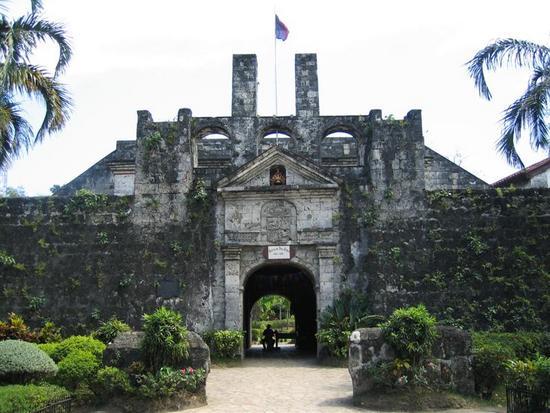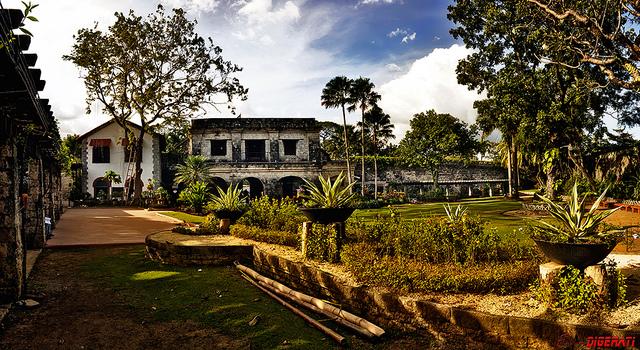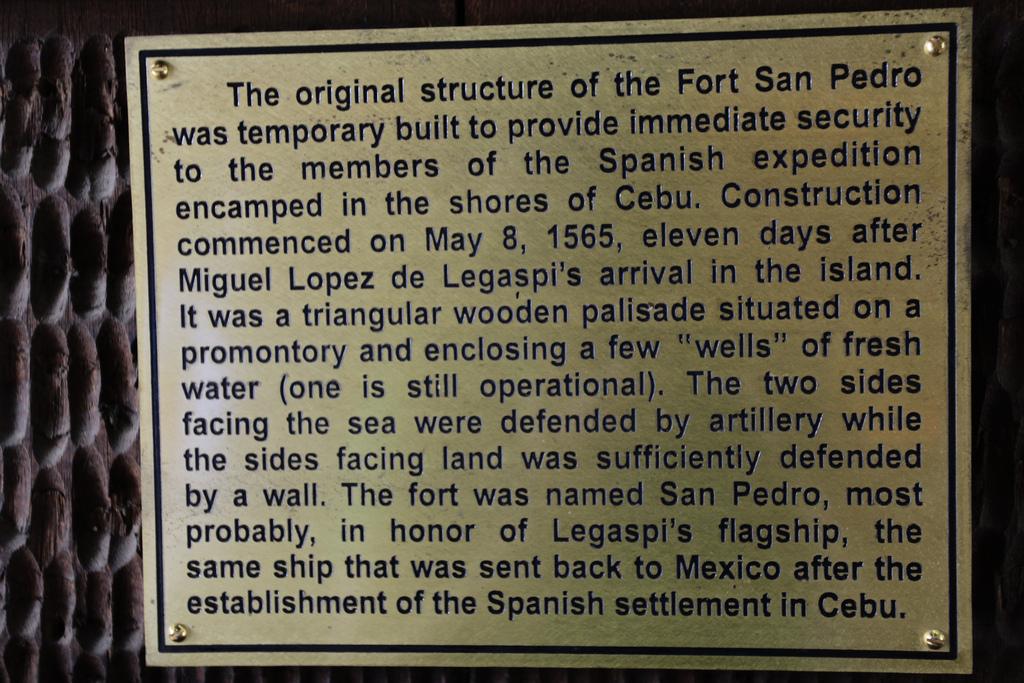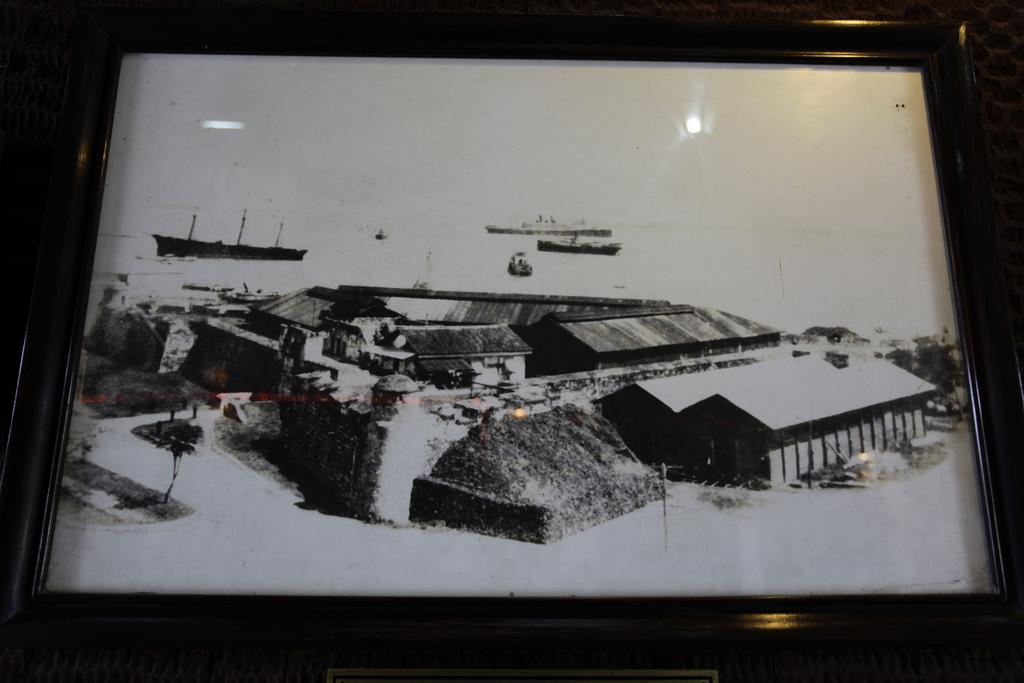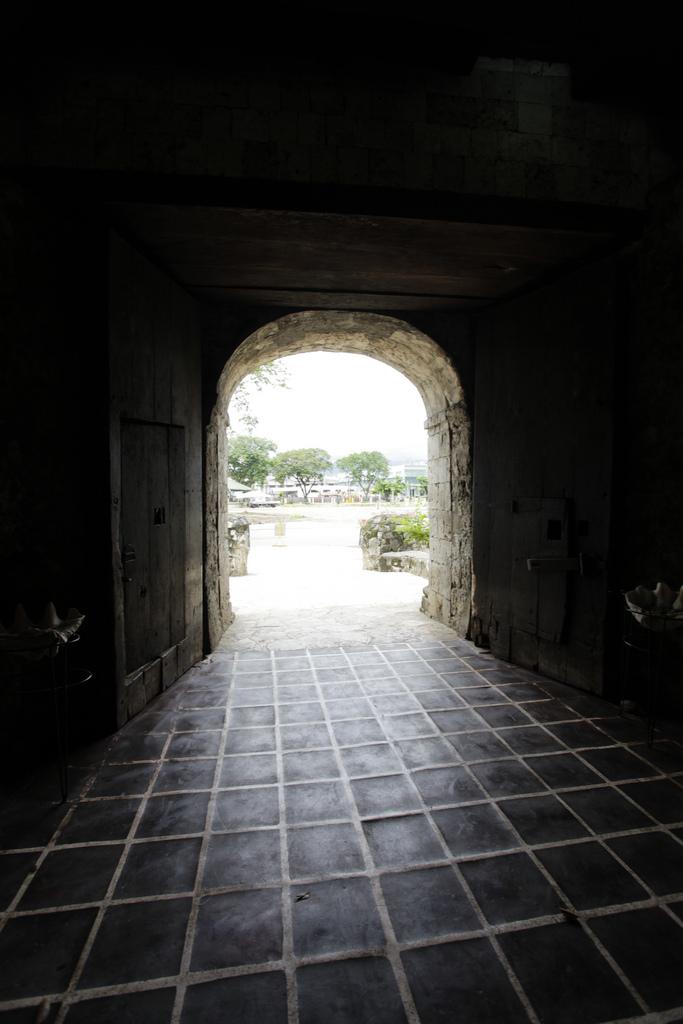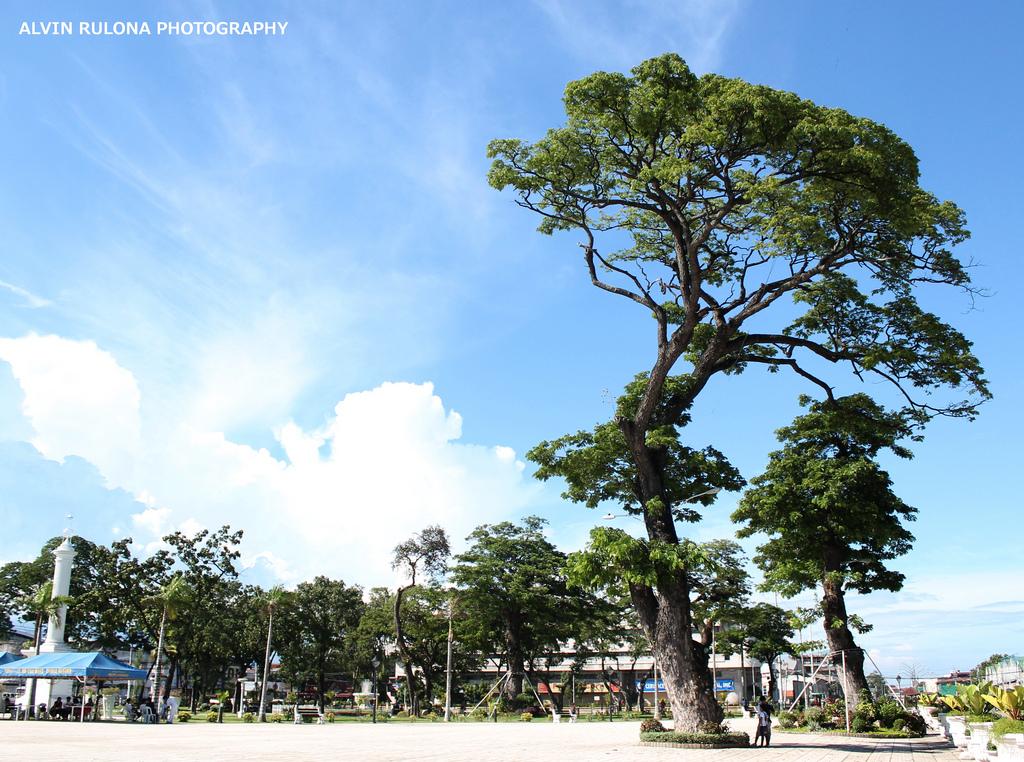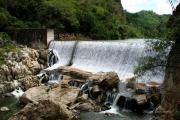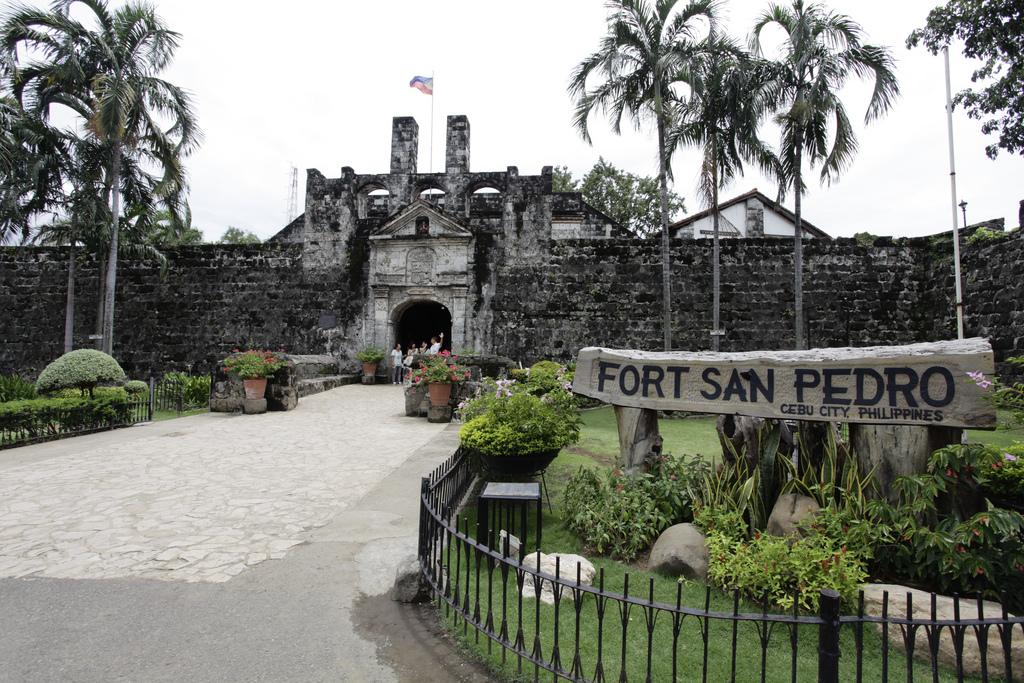
Cebu is the first Spanish settlement and the oldest city in the Philippines, so it is indeed rich in culture and history. Among the many historical landmarks the city has to offer, Fort San Pedro is one attraction that should not be missed for its significance and value to the people of Cebu throughout the ages. This is best shown in its museum, where a lot of artifacts from the Spanish era up to the present are preserved and shown to the public. Inside the fort are housed the legacies of the Spanish Government, which include well preserved Spanish artifacts such as Spanish documents, paintings and sculpture.
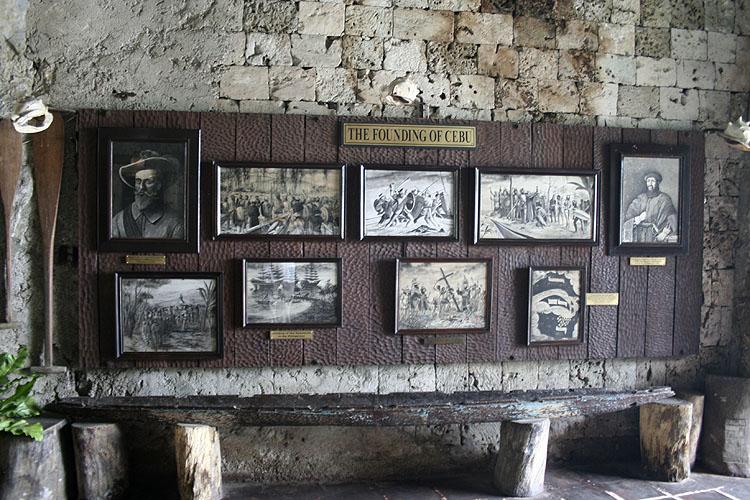
Fuerza de San Pedro, or Fort San Pedro, is a military defense structure, built by Spanish and indigenous Cebuano laborers under the command of Spanish conquistador Miguel López de Legazpi and the Spanish Government in Cebu. It is located in the area now called Plaza Indepedencia, in the Pier Area of Cebu City, Philippines.
The smallest, oldest triangular bastion fort in the country was built in 1738 to repel Muslim raiders. In turn, it served as a stronghold for Filipino revolutionaries near the end of the 19th century. This served as the nucleus of the first Spanish settlement in the Philippines.
The fort is triangular in shape, with two sides facing the sea and the third side fronting the land. The two sides facing the sea were defended with artillery and the front with a strong palisade made of wood. The three bastions were named La Concepción; Ignacio de Loyola, and San Miguel. It has a total inside area of 2,025 square meters (21,800 sq ft). The walls are 20 feet (6.1 m) high, 8 feet (2.4 m) thick and the towers are 30 feet (9.1 m) high from the ground level. The circumference is 1,248 feet (380 m). The sides are of unequal lengths and the one fronting the city is where one may find entry into the Fort. Fourteen cannons were mounted in their emplacements most of which are still there today. Work first started on May 8, 1565 with Miguel Lopéz de Legazpi breaking ground.
The date of construction of the stone fort is uncertain. Although there are claims that a Jesuit Antonio Campioni built a stone fort in 1630, and the gate of fort bears the date 1738 together with the arms of Castile and Leon. It is certain, however, that the fort underwent major renovations in the late 19th century as part of a building program to improve Cebu City.
The victory of the Americans led by Commodore Dewey at the Battle of Manila Bay in 1898 marked the end of the Spanish era in the Philippine Islands. The fort was then surrendered by the Spaniards to the Cebuano revolutionaries.
Fort San Pedro became a part of the American Warwick Barracks during the American Regime. In later years from 1937 to 1941 the barracks was converted into a school where many Cebuanos received their formal education. During World War II from 1942 to 1945, Japanese residents of the City took refuge within the walls. When the battle to liberate the City of Cebu from the Imperial Japanese forces was fought, the fort served as an emergency hospital for the wounded.
From 1946 to 1950, Fort San Pedro was an army camp. After 1950, the Cebu Garden Club took over and fixed the inner part and converted it into a miniature garden.
Although already in ruins, the upper deck was utilized for different offices. First, as a clinic of the City Health, as office of the Presidential Arm and Community Development then the City Public Works Unit used the ruins of the Lieutenant's Quarters as its field office.
In 1957 Mayor Sergio Osmeña Jr. jolted the public with his announcement to demolish Fort San Pedro and erect on the spot a new City Hall. This started a movement against the demolition idea. Articles voicing opposition appeared in the local dailies and magazines in Cebu City and in Manila. Finally, confronted by civic leaders and society heads at his Cebu City Hall office, he gave up his idea and said he will use instead the space behind the fort.
In the very same year, the city council commissioned "The Lamplighter", a religious sect, to manage a zoo subsidized by the city within the fort courtyard.
By 1968, the facade, quarters and walls of the original structures of Fort San Pedro were so obliterated that only the two towers were recognizable. Plans for the restoration of the fort was started and the zoo was relocated.
Plans and estimates for the restoration of the fort were completed by Architect Leonardo Concepcion, who had completed his MA in Restoration in Madrid. The project was jointly funded by the Board of Travel Industry (now Department of Tourism), the Cebu City Government, and the Cebu Zonta Club.
The Fort San Pedro Restoration was a tedious, time and labor consuming project. To restore the fort as close to the original as possible, coral stones which were hauled from under the sea along Cebu coastal towns were utilized. Delivered crudely cut to the restoration site, the fort laborers did the final cutting and polishing to make the blocks fit each other.
Work progressed slowly but the facade, the main building, (Cuerpo de Guardia), the walk and the observatory roof garden were faithfully restored after one and a half years. To make the project functional; the restored main building serves then as the Cebu Office of the Department of Tourism, the Lieutenant's Quarters now houses a museum, the inner court is an open air theater and its immediate vicinity as a park.
At present, it is under the care and administration of the City of Cebu, as historical park. The land on which it is situated is, however, owned by the Department of Environment and Natural Resources.
These days, part of the fort is a museum. Inside the fort are housed the legacies of the Spanish Government, which include well preserved Spanish artifacts such as Spanish documents, paintings and sculpture. A large statue of Legazpi and Antonio Pigafetta may be seen outside the fort walls.
One must see Fort San Pedro Museum when in Cebu to personally experience the history of the city and the country as well. To get there, there are daily flights from Manila to Cebu, as well as from many other major airports in the country. Also, as the the Philippines' main domestic shipping port, it can be reached by sea through the many travel, cruise and tour ships throughout the country. Once there, a variety of private and public transportation can take you to Fort San Pedro.
Gallery:
